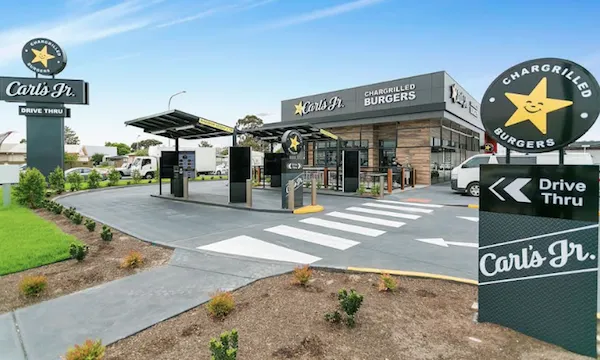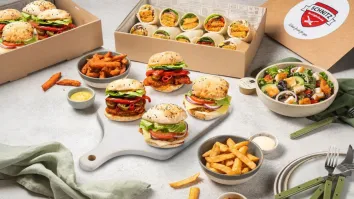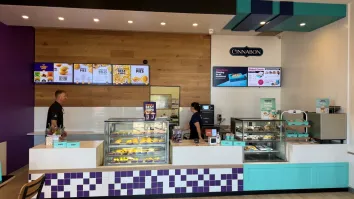
The fundamentals of site selection, as told by Foodco, Sandwich Chefs, Bansal Group and Ogalo
An analyst also stressed that brands need to consider “precinct generators”.
Amid the evolution of the different data sources now available to underpin location planning decisions, traditional factors such as commercial terms, demographics and long-term viability continue to occupy the site selection strategies of some of Australia’s top restaurant operators.
“We have always believed in being conservative in our growth plans. Be wary of brands that plan to expand rapidly from a small base,” Foodco head of development and design Matthew Williams told QSR Media, adding the importance of infrastructure to support an existing network whilst growing.
Aside from factoring in future growth and developments in surrounding areas and potential sites put forward from the operator’s property team, Williams also stressed the need for a brand’s ability to support remote locations and return on initial investment.
Sandwich Chefs, which currently stands at 58 stores, utilises external retail leasing consultants to source potential locations and negotiate commercial terms.
“Through the consultants, on many occasions, we are offered sites well before they go to market. Typically, leasing agents and landlords call us. However, we will often do a targeted search in a particular geographic area on behalf of a potential franchisee,” Sandwich Chefs national franchise manager Gary Powell explained.
Once a potential site has been identified and commercial terms have been confirmed, the chain undergoes a “complex” site assessment process where they look at six “primary” features and 14 “secondary” features in order to consider all site dynamics.
“On a preliminary cursory observational assessment a site might tick all the right boxes, however miss just one critical element and that could be [the] difference between getting into a great site and an ordinary site,” he added. “It’s not good guessing or just relying on previous experience, there needs to be objective analysis.”
Similarly, Ogalo has a site selection criteria policy and said it advises prospective franchisees obtain independent advice from experts about the identification, evaluation, selection and present and future suitability of a proposed site or premises for a new store location. The fast food chain recently opened its first interstate site in NT this month, which was also their 18th overall store.
“In many instances, prospective franchisees that approach us to start a franchise will have a possible location in mind,” Ogalo manager Nelson Lima explained.
Lima also emphasised the need for brands to examine local council requirements including trading hours, whether there are any new developments in the locality and suitability of the premises to operate as a franchised store.
“For our franchised stores, matters such as (the) size of the premises, source of power/gas, ability to install (if not already installed) mechanical ventilation, grease arrestor and drainage need to be considered. We always seek advice from a suitably qualified architect. Additionally, visibility and accessibility of the proposed new location for customers is also an important consideration,” he said.
The Bansal Group, operator of Carl’s Jr. restaurants in Queensland and the forthcoming Cinnabon Australia, recommended investment in “good research” before selecting a site.
“You’ll notice many of our sites are conveniently situated between communities and their major motorways. Another factor is growth prediction based on various market indicators in that area; Greater Brisbane is rapidly expanding and people are searching for up and coming areas to buy a home and build a life,” The Bansal Group co-owner Gaurav Bansal explained.
“Seek the right areas for your target consumers. The research process can be expensive and daunting, but down the line, you’ll be thankful you had the foresight to invest in this first step before selecting a site. Good sites mean all the difference between a thriving QSR and one that closes up shop in a year.”
“Precinct generators”
Whilst those traditional factors are present, Geotech managing director Bruce Waddington said brands also need to consider “precinct generators”, which he defined as the “type of activity surrounding a potential site that will draw in a brand’s key target market”.
“It is important that as part of location planning sites are sought with the right type of surrounding activity,” he explained. “Being mindful of where competitors are located is another important consideration, and whether they should be considered as “friend or foe” when in close proximity, as this can differ by brand.”
Many QSRs and fast casual restaurants, he said, “typically” need to feed off of “some level” of transient and passing pedestrian traffic to generate enough impulse business to sustain a store.
“However, brands differ in their degree of impulse purchasing. Therefore, it is an important first step to determine whether the majority of a particular brands customers are likely to make a predetermined decision to visit the store (a more destination-driven brand) or rely more heavily on impulse/transient business,” he said. “This will then influence whether a brand needs to seek the highest profile locations within a retail precinct, or whether a customer is likely to seek out the brand regardless.”
Balancing convenience and product offering
With growing importance of the site selection process to gain a competitive edge, Waddington observed an increase in brands looking to better serve their customers by understanding how and where they want to be served.
“Food retailing is all about balancing convenience and product offering. Positioning of the store in the right areas therefore makes it easier for customers to find you, but having a seamless customer service experience is key, as is truly understanding your customer profiles and how they should be marketed to,” he said.
“The critical part of growing a network of profitable stores is learning from what’s gone before and asking the fundamental question: Why do some stores perform better than others and what are the characteristics that make this cohort of stores different from the rest? Answering these key questions will drive better outcomes for future growth.”
























